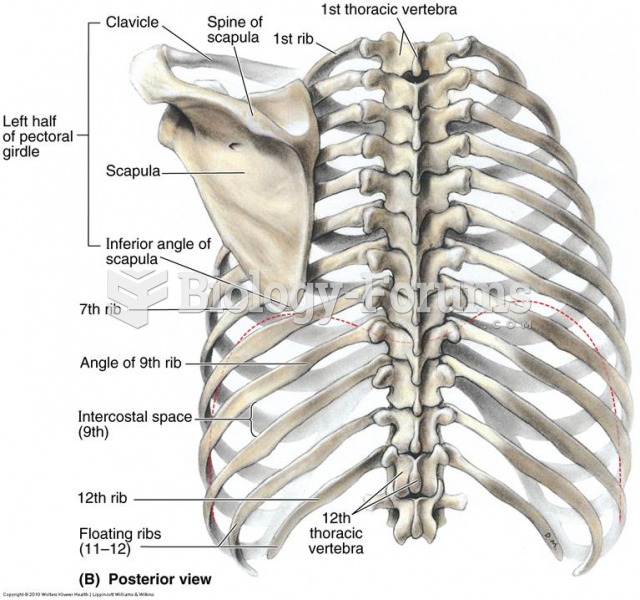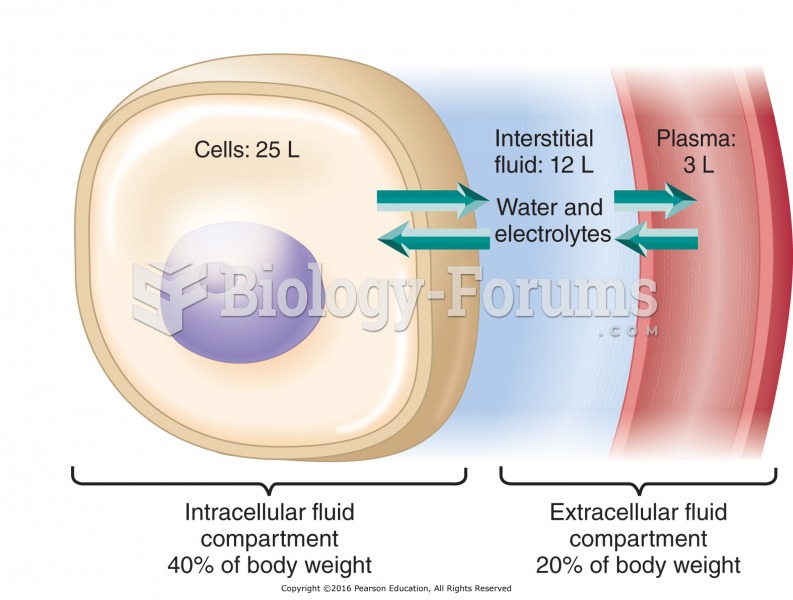|
|
|
The Romans did not use numerals to indicate fractions but instead used words to indicate parts of a whole.
About 100 new prescription or over-the-counter drugs come into the U.S. market every year.
More than 34,000 trademarked medication names and more than 10,000 generic medication names are in use in the United States.
Many people have small pouches in their colons that bulge outward through weak spots. Each pouch is called a diverticulum. About 10% of Americans older than age 40 years have diverticulosis, which, when the pouches become infected or inflamed, is called diverticulitis. The main cause of diverticular disease is a low-fiber diet.
Most women experience menopause in their 50s. However, in 1994, an Italian woman gave birth to a baby boy when she was 61 years old.







